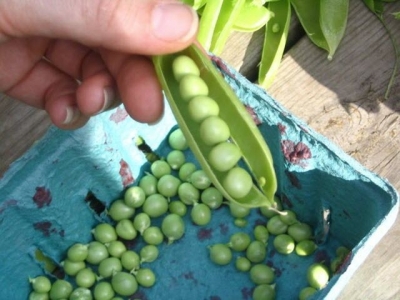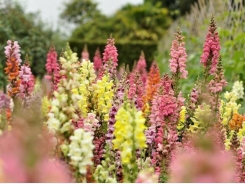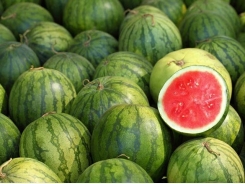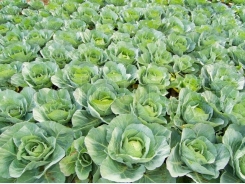How to Grow Peas

Peas are a member of the legume family and are a highly popular, cool season vegetable enjoyed by people around the world. Garden peas are high in fiber, protein and a good source of iron. Snow and sugar snap peas are a good source of vitamin C and iron. Peas are generally easy to grow and can be enjoyed in a variety of ways, in both American and ethnic foods. Peas are classified into three different types: English, (or shelling/garden peas) snap peas, and snow peas (also known as sugar peas).
VARIETIES OF PEAS
Garden Shelling peas, or English peas: these are the most popular garden peas. They are enjoyed for their inner sweet peas and not the outer tough pod, which is usually discarded.
Snow peas are meant to be consumed whole, they are valued for their thin, tender sweet pods and are harvested when their inner seeds are underdeveloped and very small. This type of pea is often found in Asian recipes.
Snap peas are low in fiber and both the pod and seeds can be eaten whole like snow peas. They are often “snapped” and cooked with both pea and pod. The difference from snow peas is that the seeds inside are mature when eaten.
Garden pea seeds are either smooth surfaced or wrinkled. The smooth-surfaced peas are generally used as dry peas in soups because they are high in starch and not sweet. Wrinkled-seed varieties are sweeter in taste and softer in texture than smooth-surfaced and are popular in the home garden and kitchen.
Peas come in both a bush type that reaches about 2-3 feet high and a vine type that grows up to 5 feet tall and needs structural support to grow on. Bush plants produce one crop, whereas vine plants will produce over a longer period of time.
GROWING REQUIREMENTS FOR PEAS
Peas grow well in full sun, cool temperatures and cool, moist, well-drained soil. They are one of the more frost tolerant vegetables you can plant. If the soil has reached a temperature of 45 degrees you can plant peas. Peas prefer a pH level of between 6 and 7.5. Before amending your soil, however, make sure to have a soil test done. Your local University extension office can perform soil tests.
Peas need a constant supply of nitrogen, so in addition to mixing in compost and/or manure, adding a nitrogen based fertilizer when planting is a good idea. If you are planting in an entirely new, previously unplanted area, you should consider inoculation. According to the University of Illinois Extension department (Watch Your Garden Grow) they recommend the following regarding inoculating peas:
“When peas are planted on new land, you may increase the yield by inoculating peas with a commercial formulation of nitrogen-fixing bacteria. In an established garden, however, inoculation is less necessary. If you are in doubt, inoculation is a relatively inexpensive process that is easy to do and ensures better plant-nutrient status.”
PLANTING PEAS
Peas are one of the earliest vegetables you can plant. When the soil is around 45 degrees and can be worked properly, you can begin planting peas. Peas prefer cooler soil and climate for best crop production. There are heat-tolerant varieties that can be planted in the summer for a fall harvest.
Plant seeds into a prepared bed about 1 to 1 1/2 inches deep, one inch apart, with rows 18 to 24 inches apart. They can be planted in single or double rows. Double rows will need about 8 to 10 inches between rows.
CARING FOR PEAS
Peas will need about an inch of water per week. If they do not receive this directly from rainfall you can hand-water to supplement. Do not overwater, as it will encourage fungal diseases. Peas have very delicate root systems, so be cautious as you weed. Use shallow cultivation and avoid disrupting their root systems. Mulch can be put down over your pea plants to conserve moisture, keep roots cool and decrease weed emergence. The taller pea varieties will need to have support to grow on such as a trellis or fence.
HARVESTING PEAS
Peas can take anywhere from 55-70 days to mature, depending on the variety, so, harvesting dates will vary. For best flavor, peas should be eaten as soon after harvesting as possible. It is essential that all peas are cooled down soon after picking and not left in the heat. Follow these general guidelines for harvesting different varieties:
Shelling, or English/garden peas are harvested when the pea pods are swollen and the inner seed is slightly larger than the seed you originally planted. A good way to determine readiness is to sample a pea fresh from the plant every day for a few days. Peas on the lower part of the plant mature more quickly than the upper ones. If the peas have become hard and starchy they are overly mature.
Sugar snap peas are usually harvested every one to three days when the seeds are just beginning to swell and are still tender. If the seeds become too large, they loose their sweet, tender flavor. Sample the peas every day to determine readiness. There may be some fibrous strings that need to be removed from these peas prior to consuming. Like other peas, it is best to consume them as soon after harvest as possible. If you are not eating the peas immediately, rinse in cool or cold water, dry, and place in the refrigerator for later use. Peas will keep for nearly a week in the refrigerator if cooled immediately after picking.
Snow peas are harvested when the pea is at its maximum length but still nearly flat. Snow peas need to be picked on a regular basis (every day or two) to ensure sweet tender flavor. If you have missed harvesting them and they have become overly mature on the vine, pick those so the plant will continue to produce more peas.
PEA PESTS AND DISEASES
Root rot disease and fusarium wilt is somewhat common in peas. This is a fungal disease that initially stunts growth of the entire plant. If a mature plant is infected, it will significantly reduce crop production. Planting in a well-drained area will help prevent this problem that is usually encouraged by overly wet or damp conditions. If your garden is in a wet area, you may need to consider using a raised bed for your pea plants. Purchasing disease-resistant varieties can prevent fusarium wilt.
RECOMMENDED VARIETIES OF PEAS
Marianne Riofrio from The University of Ohio Extension office (horticulture and crop science department) recommends the following varieties to try in your garden:
Snow peas: Mammoth Melting Sugar, Dwarf Grey Sugar, and Oregon Sugar Pod.
Sugar snap peas: Sugar Daddy, Sugar Ann (dwarf), Sugar Snap, and Super Sugar Mel.
Related news
Tools

Phối trộn thức ăn chăn nuôi

Pha dung dịch thủy canh

Định mức cho tôm ăn

Phối trộn phân bón NPK

Xác định tỷ lệ tôm sống

Chuyển đổi đơn vị phân bón

Xác định công suất sục khí

Chuyển đổi đơn vị tôm

Tính diện tích nhà kính

Tính thể tích ao




 How to Grow and Use Mint
How to Grow and Use Mint  Veggies boost the bottom line
Veggies boost the bottom line